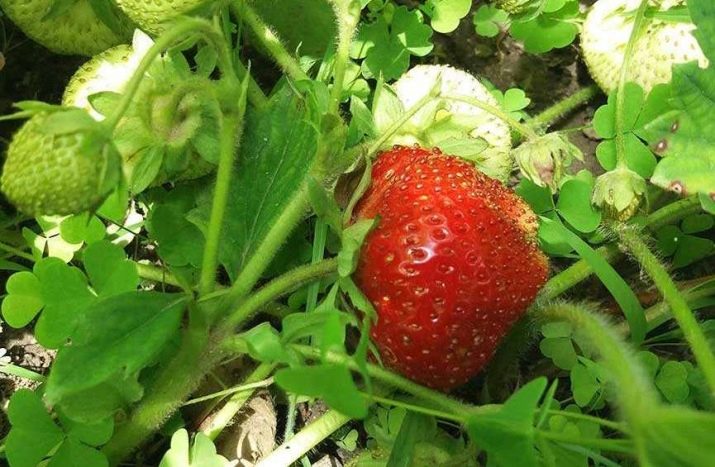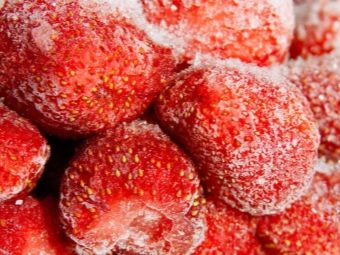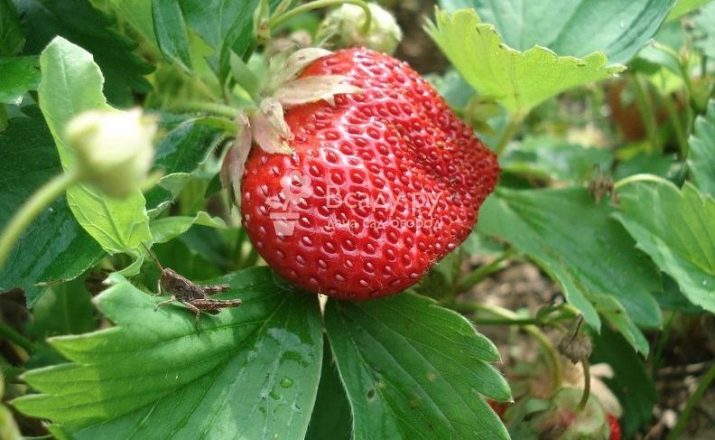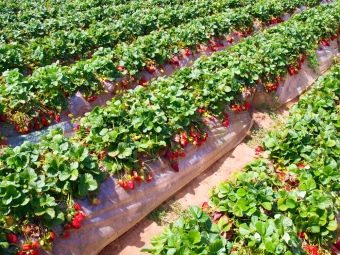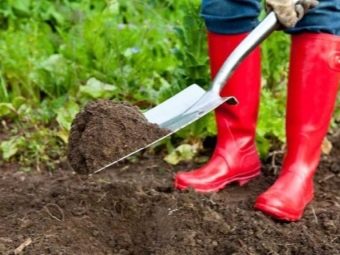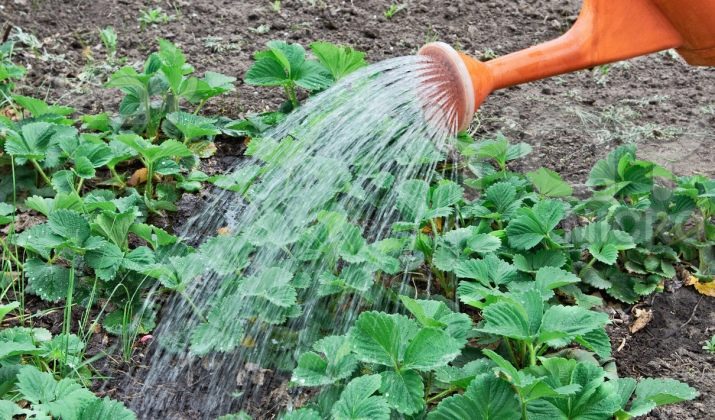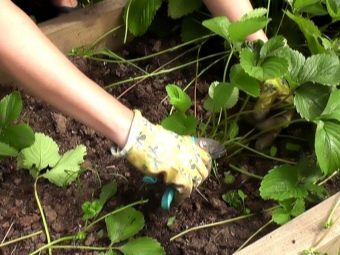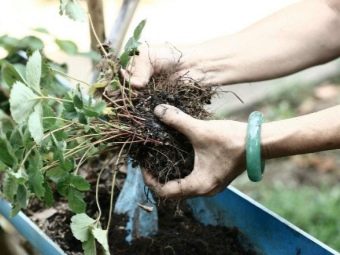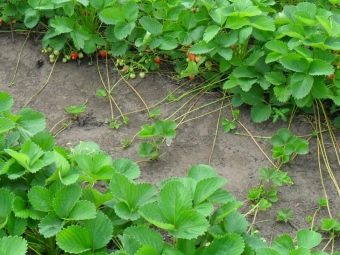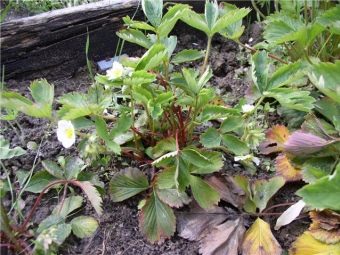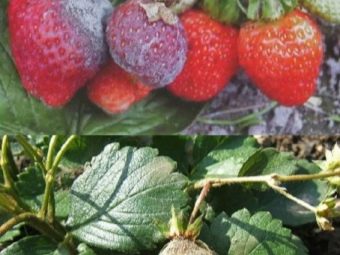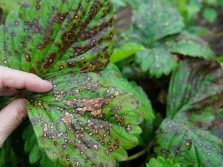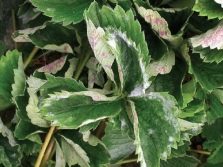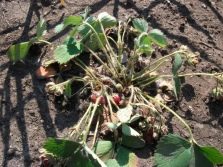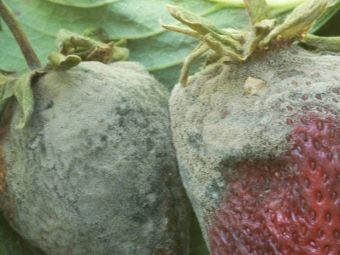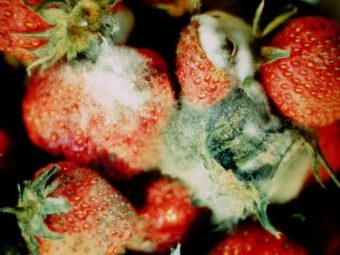Strawberry "Gigantella": description of the variety, cultivation and care
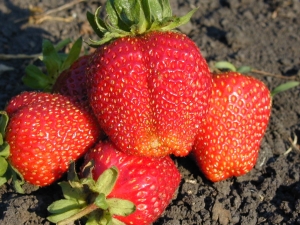
According to official data, the State Register of Russia and the CIS countries has not yet registered such a strawberry variety as Gigantella. Despite this, its cultivation began a long time ago and has been in demand since then. Gardeners note the huge size of the berries, which surpass their fellows almost 3 times.
Variety description
This large-fruited crop has large, wide leaves. The bush reaches a height of 60 cm. If you look closely at the leaf, you can find a small amount of corrugation, torn edges. The color of young leaves is light green, and the very next year of flowering uneven borders of reddish hues appear.
The butchers appear in small quantities. Their stems are characterized by considerable density and power, which allows them to stand firmly in the ground. Interestingly, the older the strawberries, the less likely new branches grow. The so-called "socket" is not in one copy, which affects the scale of yield. One bush is able to bestow gardeners with almost two kilograms of berries.
Berries "Gigantella" large, the first fruits weigh about 100 grams. Subsequently, their mass increases. The shape is rounded, more like an oval with pressed sides. The second result is observed up to 60 g. The surface of the berry is rough, a slight grainy bulge is noticeable. Down is felt the so-called comb. Its appearance is closely related to sunlight - the lack thereof does not allow the crest to ripen.
This grade is very exacting to competently calculated mode of humidity. If it is broken, the inside of the berry will be empty. Fruits to the touch are very elastic, sometimes grow dense and even hard. Such a structure is good for transportation conditions. Just during this period, they mature and acquire good elasticity. The berry is a beautiful matte red color, the consistency of the pulp is dense.
The taste qualities of homemade strawberries are quite unique - there is a pineapple flavor, maximum juiciness and considerable wateriness. These characteristics distinguish the homemade strawberry from her relatives.
The advantages of the variety include:
- giant sizes of fruits;
- unique taste properties;
- portability of transportation;
- long shelf life;
- suitable for freezing.
Experienced gardeners faced some problems when growing berries. This highlighted the shortcomings:
- quite capricious culture;
- high risk of infection by plant diseases;
- frequent attacks on pest bushes;
- does not tolerate low temperature;
- adult strawberries are less productive.
If you decided to plant a strawberry for industrial gathering, remember, proper cultivation and care will require a lot of money, strength and patience from you.
Cultivation and care
By its nature, this culture belongs to the remontant, why its maturation occurs later than usual. On the territory of the regions of the Middle Band, bushes bloom at the end of June, the southern regions see a similar situation a little earlier - the second half of June. To obtain good results, it is necessary to strictly observe all the rules of growing and caring for the plant.
The best place for the cultivation of strawberries are the climatic conditions of southern latitudes - for example, the Crimean, Caucasian and Krasnodar lands. Adaptation to the northern climate is very difficult, since Gigantella is afraid of low temperatures. For this reason, gardeners have to resort to the use of greenhouses and greenhouses. When choosing the soil should be preferred sandy conditions. By planting the plant in clay or rocky soil, you will subject the rhizome to slow drying. As a result, you will get small fruits, and the bushes will gradually lose their productivity.
If you are going to plant a plant in chernozem, We recommend preparing a place for cultivation in advance: for this, chernozem should be mixed with sand and fill the selected site. Climatic conditions of the Middle zone are unsuitable for the cultivation of remontant strawberries. In such regions, frequent weather changes are observed - temperature jumps and changes in the percentage of humidity. Because of this, the bushes are cold and then thawed, which leads to the rapid rotting of the roots.
A strange feature of the berry crop is that only in the first season it gives high yields and large fruits, although the first planting is the most resistant to natural whims and harmful insects. But from the second year of life the plant begins to cause serious trouble. Strawberry bush loses its resistance to attacks of pests, weakens immunity to disease. And minor changes in the weather adversely affect the condition of the plant.
Planting of seedlings occurs in a single pattern - 40: 60 (cm). This means that there are 3 seedlings per square meter. Experienced gardeners claim that this type is ideal for those who are engaged in the cultivation of most of their free time in areas near the house. Because the plant must be carefully looked after. Still, the best place for strawberries will be the greenhouse, where you can install drip irrigation, the desired temperature and provide sprouts with constant sunlight.
The main procedure for the care of "Gigantella" is timely watering and ensuring a stable temperature regime.
Insignificant, at first glance, deficiencies can provoke a violation of the development of the root system, as a result of which the yield will decrease. Too high a temperature detrimental to the function responsible for reproduction. As a result, pollen does not allow for the process of fertilization, and the fruits cease to tie.
It is important to observe the established level of moisture, since the culture is very capricious. Insufficient moisture can kill the plant - first the roots dry up, the leaves begin to wilt, the fruits seem to shrink in size and stop tying at all.
But too frequent watering can be harmful. In this case, rotting of the rhizome is observed, the young berries are very small, some ripen by half, sometimes even too wrinkled. It doesn’t affect the taste, of course, but the flesh is very watery. With all this, the outer shell of strawberry remains elastic enough, which makes it suitable for long-distance transport.
Useful tips on care:
- a plant planted in an open ground should be constantly cleaned of weeds that have appeared;
- watering should be done once a week;
- get rid of infected shrubs immediately;
- in order to avoid rotting homemade strawberries mulch;
- it is important to feed in time (the solution from sodium sulphate and nitrophosphate will go well as a watering; after assembling the fruits, use the same nitrophosphate and wood ash);
- in winter you can do without shelter frost-resistant strawberries;
- do not rush to remove old leaves - they act as a heater for the roots.
Breeding
The process of reproduction in a given culture occurs by the method of division or the seedlings of the stepsons. Due to the fact that the number of appeared stepsons is not large enough, gardeners are advised to carefully monitor the growth of berry whiskers. Providing the right care, you can get about 8 samples from one bush.
In this case, you should save a couple of young bushes. Be sure to remove all available sockets - this will stop flowering, which, in turn, will lead to the growth of stepsons. Somewhere in the second summer month, you can begin a stepchild separation. Then you can put them in the soil on the intended landing site. June is the most suitable month for this procedure, since this time allows the sapling to fully harden and get used to the environment before the first low temperatures and the rainy season.
The breeding function may also include the use of horns.To do this, select only samples with a young rhizome, until the wood base has become stronger.
"Gigantella" can not multiply by seeds. Such attempts are doomed to failure. In this case, you will encounter overcrowding, splitting and loss of basic taste. The harvest is still observed, but on a minor scale. In the worst case, the complete absence of sweet fruits is possible.
Diseases and pests
The risk of infection of plant crops is very high. A variety of diseases are easily transferred to the root system and infect the whole plant. Among the dangerous diseases are the following:
- nematode;
- black and gray rot;
- root rot;
- spotting;
- powdery mildew;
- wilting fusarium type.
In addition to these berry diseases, strawberries are often attacked by all sorts of insects, for example, cabbage soup and various beetles. Therefore, if you are going to plant garden strawberry varieties "Gigantella", Get all the necessary processing chemicals for the roots and stems.
- Gray rot characterized by a berry bloom of gray shades. This phenomenon is provoked by the process of decay. Spread of infection occurs by spores. Wind and rainwater, which spreads rot around the perimeter of the stems, affect the rapid takeover of the leaves. The environment for breeding will be too high humidity, which will lead to infection of neighboring bushes.
- Root rot represents black spots on the roots. Gradually, they move to neighboring branches. Leaves and rosettes begin to darken. All basis is painted in brown color, as a result the sapling perishes. Such infections are observed during the breeding season.
- Mealy dew is a fungal disease that kills leaves, berries and their core. First, dots of white appear, resembling ordinary motes. The disease progresses if the white spots increase and merge into a large powdery cluster. The deciduous side turns wrinkled and becomes very thick. Dew is thrown on the stems and fruits - all this leads to death.
- Young landings most exposed fusarium wilt. The disease overtakes the culture column, the core begins to darken, the ovaries fade and die. Root and deciduous systems fall apart. The provocateur in this case is the hot temperature. Preventing this will help frequent irrigation.
Gardeners reviews
Most gardeners are satisfied with a capricious strawberry variety. They note fragrant, sweet and huge fruits, compared with the size of an average apple. In comparison with other varieties of berry culture "Gigantella" is the best. Experienced gardeners recommend that you inspect grown bushes as thoroughly as possible - the earlier the damage is found, the more chances to save the plant. Of course, fertilizing and fertilizer are an integral part of the cultivation, but you should not get involved in them either. This can lead to poor quality fruit.
In general, the Gigantella variety is good enough to produce high yields of sweet and aromatic berries. Proper care will allow you to enjoy the fertility of the garden culture for more than a year.
How to grow and care for strawberries "Gigantella", see the following video.

